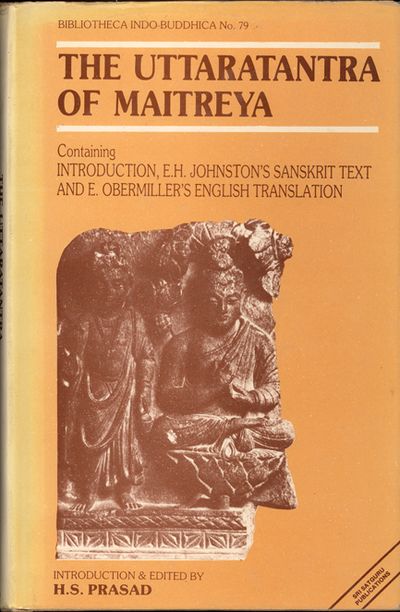The Uttaratantra of Maitreya
< Books
| Line 76: | Line 76: | ||
**{{i|The Hīnayānistic Congregation is not Worthy of Being Worshipped| 272}} | **{{i|The Hīnayānistic Congregation is not Worthy of Being Worshipped| 272}} | ||
**{{i|The 3 Jewels in their Character of a Refuge|273}} | **{{i|The 3 Jewels in their Character of a Refuge|273}} | ||
| − | **{{i|The Motives for the Establishment of the 3 Refuges from the Empirical Standpoint as Explained by Āryāsaṅga|273}} | + | **{{i|The Motives for the Establishment of the 3 Refuges from the Empirical<br>Standpoint as Explained by Āryāsaṅga|273}} |
**{{i|The Doctrine and the Congregation are not Refuges in the Ultimate<br>Sense|274}} | **{{i|The Doctrine and the Congregation are not Refuges in the Ultimate<br>Sense|274}} | ||
**{{i|The Buddha is the Unique Absolute Refuge|276}} | **{{i|The Buddha is the Unique Absolute Refuge|276}} | ||
Revision as of 12:35, 5 August 2020
This book is in four parts. The first part consists of Introduction by H.S. Prasad. He argues for sempiternal, dynamic and substantive reality underlying all appearances. He shows that as one rises to a higher level of consciousness, the various yānas, like śrāvakayāna, pratyekabuddhayāna, bodhisattvayāna and mahāyāna, all merge into ekayāna; for each contributes to the gradual realisation of the oneness of ultimate reality, thus paving the way for the emergence of universal culture. On Prasad's view the much talked-about negativism of the Mādhyamika—sarvadṛṣṭiśūnyatā—is not an end in itself, rather it is a basis for the realisation of the essential unity of all beings, sentient as well as insentient, leading to the cultivation and promotion of universal good, compassion and friendliness.
In the second part is reprinted the Sanskrit text of Maitreya's Uttaratantra (Ratnagotravibhāga). The third part includes corrections and emendations suggested by Jikido Takasaki in the Sanskrit text in the light of Tibetan and Chinese versions. The fourth part is an English translation of the text from its Tibetan version by E. Obermiller.
This book is a radical departure from the traditional interpretations of Buddhism and the Mādhyamika philosophy in particular. It aims at reviving
philosophy as cultural activity, a path to enlightenment and spiritual discipline. (Source: Exotic India)
| Citation | Prasad, H. S., ed. The Uttaratantra of Maitreya: Containing Introduction, E. H. Johnston's Sanskrit Text and E. Obermiller's English Translation. Bibliotheca Indo-Buddhica 79. Delhi: Sri Satguru Publications, 1991. |
|---|---|

